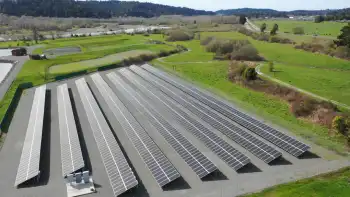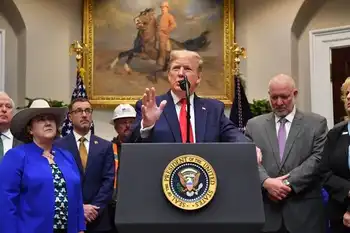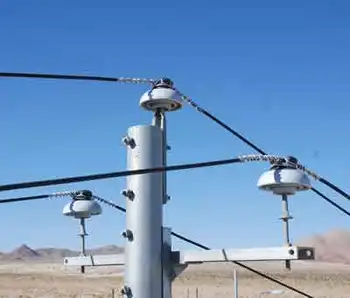Farmers growing power along with their crops
By Associated Press
Electrical Testing & Commissioning of Power Systems
Our customized live online or in‑person group training can be delivered to your staff at your location.

- Live Online
- 12 hours Instructor-led
- Group Training Available
Besides the 40-some dwarf Nigerian goats they milk to make artisanal cheeses, they also raise chickens for meat and eggs, a steer for beef, horses to ride and vegetables for the table.
Unlike most small farms, their heat and electricity is entirely home grown. They produce electricity from solar panels when the sun shines, and a micro-hydro turbine when winter rains put water in the creek. Oak and fir cut from the farm fire a boiler that heats the cement floors of the dairy and cheese making room, as well as the hot water to wash the goats and themselves.
"We thought we should be responsible for our own energy," said Vern Caldwell, a retired U.S. Marine Corps aircraft maintenance officer. "So that drove a lot of everything else that we did — where the buildings were placed, how they were placed, taking advantage of passive solar, how we were going to heat, how we were going to cool. All those issues then got driven by this one decision to be off the grid."
Pholia Farm is unusual in the degree to which it is energy self-sufficient.
But more farms are installing renewable energy, said Stephanie Page, renewable energy specialist for the Oregon Department of Agriculture. The motivation was sparked by the 2008 spike in fuel prices, and is being fanned by a range of grants and tax credits handed out by state, federal and private agencies.
"As they exhaust energy efficiency projects on their farms, then they are starting to look more at renewable energy," she said.
Just how many remains unclear, but the motivation seems to still be a desire to be green more than the bottom line, despite an increasing array of financial incentives.
No one really knows how many U.S. farms use renewable energy, such as solar photovoltaic panels, hydroelectric generators, and methane digesters. The 2007 Farm Census found 23,451 out of more than 2 million farms — about 1 percent — generated some kind of electricity or energy, but just what that means is unclear. The agency is doing a more detailed count this year.
But indications are that the numbers are rising.
Overall renewable energy production rose 5 percent from 2007 to 2008, according to the Energy Information Administration.
And there were $9 million worth of applications for just $2.4 million in grants authorized by the 2008 Farm Bill for farm energy audits, a precondition to applying for alternative energy grants, said Bill Hagy, special assistant for alternative energy policy for the secretary of Agriculture.
In fiscal year 2008, USDA Rural Development funded 197 renewable energy projects, and projections are for 385 projects in fiscal 2009, said spokesman Jay Fletcher.
At Persephone Farm in Lebanon, Jeff Falen and his wife, Elanor O'Brien, raise organic vegetables. They have been building up their solar array since 2004, and the latest installation should bring them up to 100 percent of their annual electricity use, which includes a plug-in electric tractor. A boost in the Oregon state tax credit from 30 percent to 50 percent, spread over five years, made the latest addition easier. A 30 percent federal tax credit is also available.
"We are basically harvesting the sun when we're farming," said Falen. "That's what our crops are doing. This is just another way of doing it."
Though increases in incentives have made alternative energy more affordable, it remains a philosophical decision rather than a bottom-line decision, Falen added.
"We try to look at the cost of electricity being substantially higher than getting it from the utility," Falen said. "There are a lot of deferred costs of adapting to future climate change, impacts to people's health. With respect to gasoline there is a lot of cost from fighting wars to maintain supply."
Solar contractor Ron Summers in Detroit, Ore., regularly advises farmers that they need to be showing a significant profit to take advantage of the tax credits that are a big part of making renewable energy pay.
"Everybody wants to be green," he said. "Not everybody can afford it."
Wintergreen Farm in Noti grows organic fruits, vegetables and grass-fed beef. It took awhile to make enough profit to make the tax credits work for installing solar panels, and a USDA energy grant covering about a quarter of the cost helped them decide to go forward, said partner Jack Gray.
Before adding to capacity that now covers about one-fifth of their energy needs, they plan to improve the energy efficiency of walk-in coolers and other equipment.
"You really have to be able to take advantage of the tax credits, the 50 percent from the state and 30 percent from the feds," Gray said.
Lucien Gunderman was hoping to produce all the electricity he needed to irrigate hay fields and beef pasture on his Crown Hill Farm in McMinnville when he tapped a network of irrigation reservoirs to run a hydroelectric turbine in 2001, but has been surprised by the costs and disappointed in the results.
"It's been a good investment as far as an enjoyable thing to put in and operate and see a project come together and work," he said. "The dollar return has not been the best."
Gunderman blames excessive projections of how much electricity the water available could produce, and figures his original estimate of 19 years to pay back the cost will double, due to having to add on to the system to hit 100 percent of his need.
"Everybody talks about how we need to go to renewable — renewable is great," he said "But you need to have money, which thankfully we had, to invest."
Vern Caldwell would never have gone completely off the grid, with the extra expense of batteries to store the power generated by his solar panels and turbine, if the farm had already been hooked up to power. The land had previously been a grass landing strip owned by Gianaclis' parents. Not hooking in to the grid saved them $10,000 to bring in power from the road.
"The thing to remember about most types of renewable energy is people keep trying to associate it with money," he said. "It's really just because it's something that needs to be done. We felt like it's something we should do. We didn't really calculate a payback. We just felt like it was necessary."











